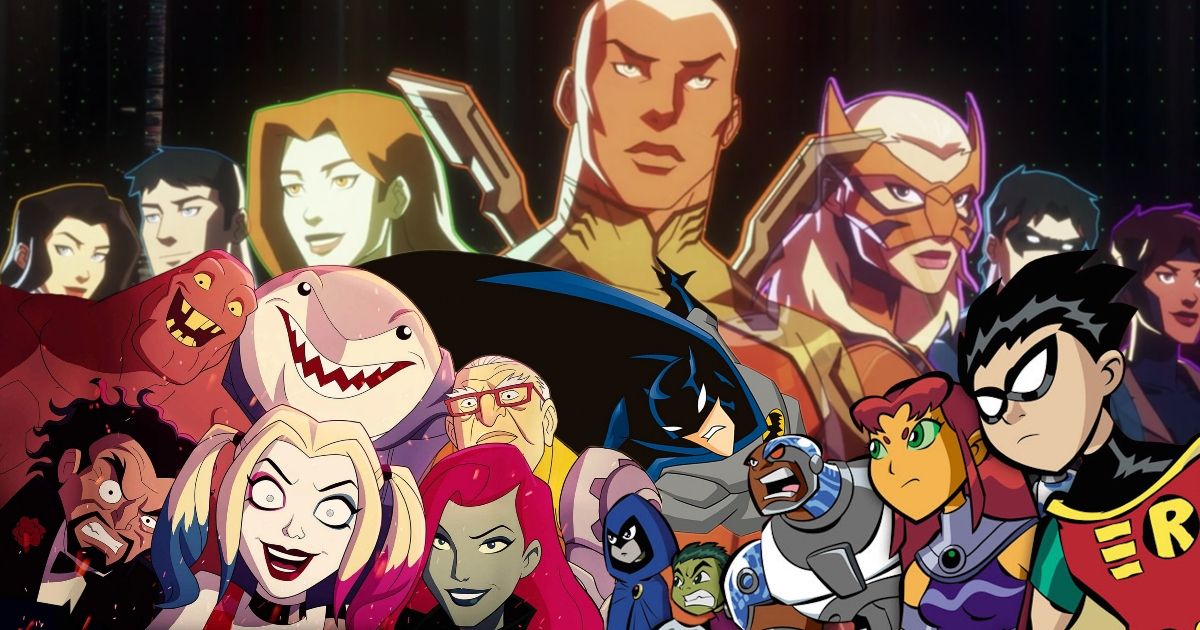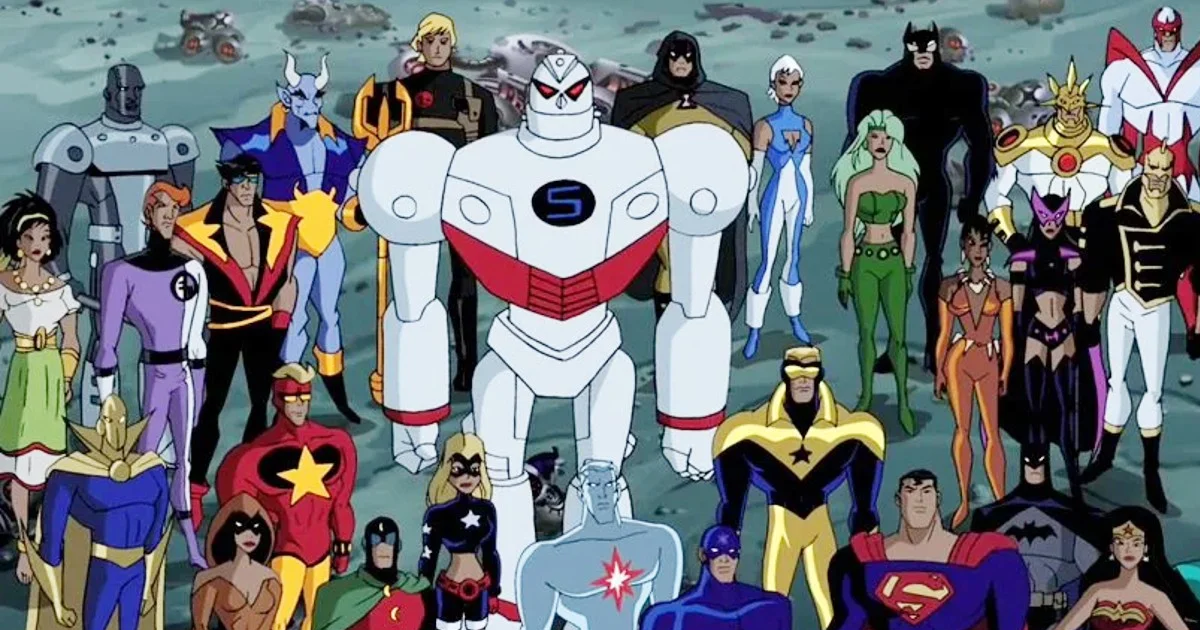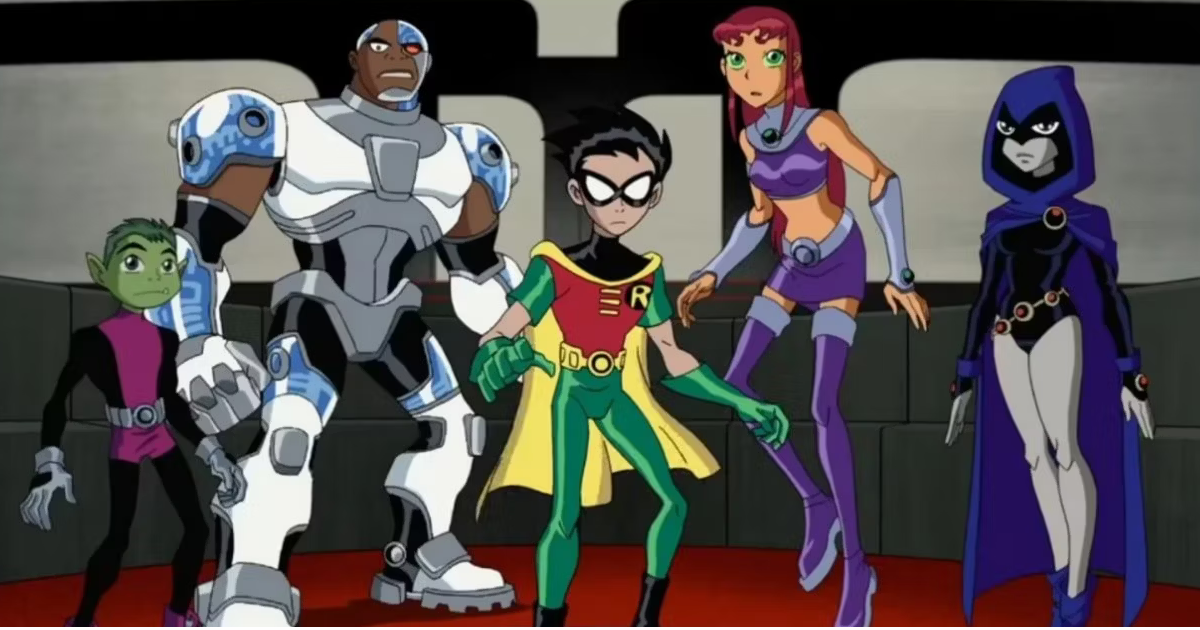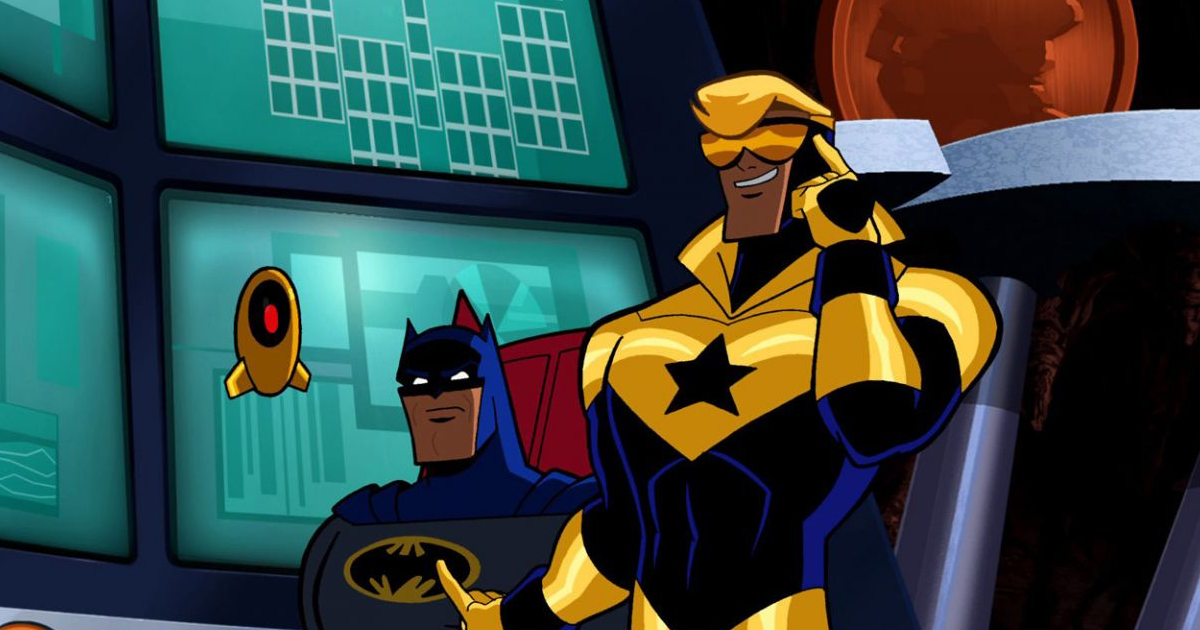Marvel and DC have both tried their hand at animated TV with multiple shows about as many characters. While you can argue the merits of each individual show on both sides, DC has produced animated shows much more consistently from the 90s to the present day. Of the two major superhero franchises, DC has the larger presence when it comes to animation, which is surprising given that Marvel is owned now by the animation titan Disney.
DC animated shows have been popular and well-supported enough that there is even a DC animated universe (though like the live action universe, it’s rather confusing as to what is actually canon in it and has also been rebooted a few times). What accounts for DC getting so many good animated shows? From Harley Quinn to Batman: The Animated Series, what are the common factors that makes this animated universe so good?
Variety of Characters
If you look at the DC characters who get movies and TV shows, you can see how they offer very different characters to watch. Shows like Young Justice and Teen Titans offer the perspective of plucky teenage characters. Justice League Dark and the John Constantine-focused movies are housed in the darker side of the magic in the DC universe. You have a raunchy comedic satire of superheroes and supervillains in the HBO Max series Harley Quinn. All of these shows offer very different things and very different characters.
The MCU has begun to fill out its live action TV roster in a similar way, adding more and more characters who offer different perspectives on the larger universe. The DCAU is similarly broad, even in its team-up series. The two Justice League shows and Young Justice are often an anthology of different superheroes who all have distinct identities despite residing in the same universe. The universe doesn't shy away from things that seem too goofy, instead embracing them. Kite Man is an example in Harley Quinn, but this has been true from the beginning. In contrast with the movies, which generally give us a very serious and stark take on the Joker, Batman: The Animated Series embraced his more goofy side while making an effective manic and sinister villain. Mark Hamill's Joker is iconic to this day, while the actor still reprises the role occasionally based on his Batman: The Animated Series success.
Different Takes on Famous Characters
The DCAU has several distinct Batman TV shows. First was Batman: The Animated Series, which portrayed Batman in a noir city with gangsters and supervillains. Then, there was The Batman, which showed Batman as a younger Bruce Wayne in a more modern city in the early-2000s. Next, there was Batman: The Brave and the Bold, which showed a Batman that was more consistent to 1960s Adam West incarnation. Even in other shows, we see different takes on the same character. Harley Quinn, for example, pokes fun at Batman and exposes some of what makes him more ridiculous and funny. Harley Quinn herself is a different take on the character in the show, as in Batman: The Animated Series she was firmly a sidekick of the Joker, but the Harley Quinn show has done a lot to explore Harley as her own independent person, outside the Joker's shadow. Poison Ivy, in the same two shows, goes from being a typical femme fatal to a more well-rounded, antisocial, and snarky character.
There are plenty of examples like this, and the fact that these shows don't all share a canon actually helps them forge distinct identities for these characters when they appear in one of the many DCAU TV shows. Sometimes, that just means giving a character additional depth, like when Young Justice expands upon Robin as a character as he was in Batman: The Animated Series. In some cases, the take on the character is something new and interesting, in the context of the universe, for example, when we see Batman in the Justice League having to act as a team leader.
Each show, beyond its characters, works to stamp out its own distinct identity. Teen Titans notably did not star Batman and that makes it so that the property stands on its own two feet. While more contemporary DC shows are not afraid of cameos — for example, John Constantine appearing in Harley Quinn — they still feel very distinct and separate. While there are benefits to writing a universe in which all your properties exist, the DC animated TV shows prove that you don't necessarily have to do that all the time. Sometimes, a show can benefit from a degree of separation from other shows. You don't have to watch Teen Titans to understand Batman: The Animated Series, and you don't have to watch either to understand Young Justice.
Distinct Tone and Visuals
One other benefit of each show not necessarily being in the same canon is that the visuals can be changed to fit the tone and story of any show in question. Batman: The Animated Series is known for its iconic noir style and its use of darkness and color. That visual style is adapted somewhat when Batman goes into the Justice League, with that show being more colorful and less dark. Batman: The Brave and the Bold goes even further, employing a style very reminiscent of older golden age or silver age comics. Teen Titans takes its animation cues from anime, having very expressive characters that can pull off dramatic emotion and comedic antics.
There are also excellent DC live-action TV shows, but the reason why DC's animated shows are noted as especially consistently good is that DC has been making shows for so long that they have had an important hand in defining these characters. Shows like Young Justice and Harley Quinn can trace their evolution through to Batman: The Animated Series. Harley Quinn herself was a character made for the animated series, who was then adopted into the Comics universe. According to Looper, Paul Dini was inspired by Arleen Sorkin in Days of Our Lives, who dressed as a jester in an episode. There is a through-line from Batman: The Animated Series to modern DC animated shows, whether it be Kevin Conroy's iconic performance as Batman or the vivid picture of Gotham as a dark noir city.




